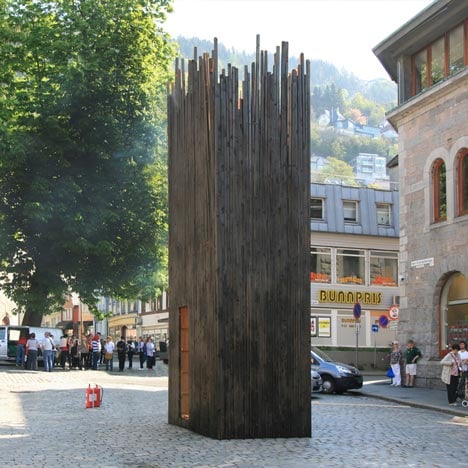The charred exterior of this temporary pavilion in Bergen, Norway, references 16 major fires that have taken place in the city since the twelfth century.
Named the Bergen Safe House, the wooden tower was designed and assembled in four days by Dutch architects Max Rink and Simon de Jong and designer Rachel Griffin.
The burnt outer layer forms a protective skin around the wooden walls that resists insects, rot and any future fires.
A series of wooden platforms create up to 11 stepped levels inside the pavilion and can be moved into numerous configurations to suit different activities.
The pavilion is currently located in Vågsbunnen square and is open to the public 24 hours a day.
See more stories about projects that feature blackened wood »
Here's some more information from the architects:
The Bergen Safe House is a temporary multi-purpose city structure, designed and built by Max Rink (SPRIKK), Rachel Griffin (Earnest Studio) and Simon de Jong (de+ge architects) during a 4-day competition in Bergen, Norway. The structure uses the protective qualities of burnt wood, while simultaneously serving as a monument to Bergen's venerable history of city fires.
The relationship between man and fire is an old one, characterized by a balance of safety and destruction. Fire provides warmth and comfort, yet the city of Bergen has burned to the ground 16 times in the last 800 years.
The Bergen Safe House embodies this dichotomy. Made entirely of 5 x 5 cm beams, the exterior facade of the structure is burned so that the outermost layer of the wood turns to charcoal. This charcoal layer protects the structure from future fires, rot and insects, while leaving the interior enclosed, untouched and safe.
The interior of the Safehouse consists of multi-level moveable platforms that can be arranged in different configurations. In this way, space is provided for sleeping, seating, working and socializing for up to 28 people, as well as allowing for a way to move vertically through the space.

